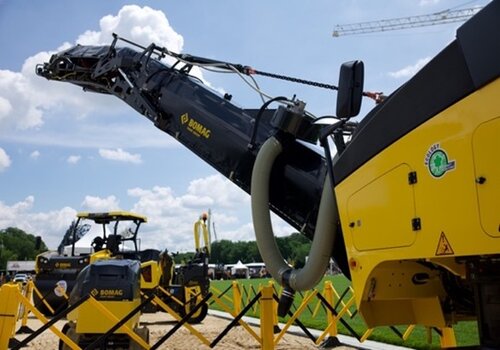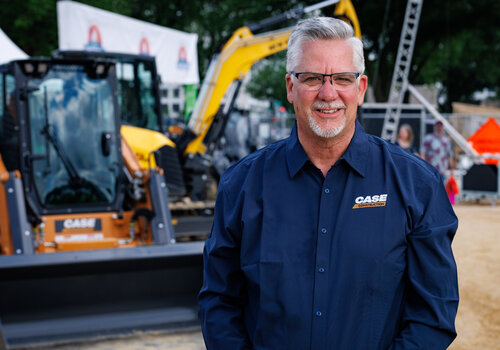Imagine a quiet corner of a bustling construction site where a seasoned operator watches a young apprentice navigate a heavy machine simulator. The simulator gives the trainee access to the controls of a full-size piece of equipment, offers a virtual view of a jobsite and provides real-time data feedback to the trainer. This is no ordinary training session; it's a look into the future of construction training – and it’s happening now.
Heavy machine simulators are rapidly transforming the landscape of construction training. These advanced tools use immersive technologies like virtual reality (VR) and augmented reality (AR) to create realistic, interactive training environments. Trainees can practice operating machinery in a risk-free setting, learning to handle complex tasks and emergency situations without the fear of causing accidents or damage.
Simulation training has long been a staple in aerospace and military applications but is now making significant inroads into industries like construction, mining, material handling, forestry and agriculture.
These advanced tools offer a faster, safer and more affordable training solution compared to traditional methods. With more than 42,300 heavy machine operators needed each year until 2032, simulation training could bring workers to the industry.
"Simulators are becoming indispensable in construction due to their ability to address several industry challenges," says Alan Limoges, CM Labs Construction and Utilities Product Growth Manager. “These advanced tools offer a faster, safer and more affordable training solution compared to traditional methods.”
A BALANCED APPROACH TO TRAINING
Introducing heavy machine simulators into a training program requires a balanced approach, especially when dealing with a diverse workforce. Combining simulator training with real-world experience ensures both experienced and new operators develop theoretical and practical skills.
For older workers who might be less familiar with new technologies, simulators offer a way to enhance their skills without the risks associated with real equipment. The key is to highlight the benefits and provide ample support. Pair them with younger, tech-savvy colleagues in a reverse mentorship program for even more benefits.
The new generation of workers is more comfortable with technology. A simulator can be an engaging and effective learning tool to combine theoretical knowledge with practical experience. Leverage their comfort with technology to explore advanced features of the simulators and encourage them to troubleshoot and experiment.
“The younger generation responds very well to simulation training, given that their lives have been immersed in technology from a young age. It’s also an effective tool for assessing a new recruit’s skill level,” Limoges said.
SAFETY FIRST
One of the most compelling reasons for adopting heavy machine simulators is safety. Proper training is crucial in reducing workplace accidents, especially with the complex and dangerous variety of equipment used on job sites across the industry. In a simulator, trainees can practice operating equipment under various scenarios, from maneuvering in tight spaces to moving heavy loads in inclement weather, all without the risk of injury or equipment damage.
CM Labs strives to replicate real-life scenarios as accurately as possible.
“Our scenarios reflect the chaotic nature of real-life jobsites, such as workers walking around, loud noises in the background and cars driving by.” Limoges says.
The instructor can even create some of this chaos, Limoges explains, which “allows them to trigger certain events like a lightning strike, snapped cable or check engine light at will to see how the trainee will react.”
Training with real machinery involves fuel costs, maintenance and the potential for wear and tear. Simulators eliminate these expenses, allowing for repeated practice without financial strain.
COST-EFFECTIVENESS
Beyond safety, there is a cost-effectiveness in using simulators. Training with real machinery involves fuel costs, maintenance and the potential for wear and tear. Simulators eliminate these expenses, allowing for repeated practice without financial strain.
“Many training companies spend tens of thousands of dollars on fuel every year for training equipment,” Limoges shares. “By having a simulator, you save money by not needing to burn that fuel.”
Gerdau’s Texas facility, which employs nearly 900 equipment operators, offers an example of successful simulator integration. The company implemented simulators for eight of the 12 hours of initial training, significantly reducing equipment dependency and fuel consumption. This maintained training effectiveness while alleviating instructor burdens and enhancing productivity. Gerdau also cut training times by 50% and improved instructor time by 500%.
The return on investment (ROI) for simulators is substantial. The American Society of Safety Engineers (ASSE) found that every dollar spent on workplace safety programs yields a return of $4 to $6, highlighting the financial benefits of reducing accidents. Additionally, simulators free up equipment for revenue-generating tasks rather than training, further enhancing ROI.
Using simulators, Conewago Enterprises reduced its onsite crane training time from six months to seven weeks and lowered training costs from $40,000 to $15,000.
For contractors who are not ready to purchase a simulator, there are multiple companies that rent a variety of simulators, making them accessible even to smaller firms with limited budgets. There are also a wide range of simulator options, from desktop models to fully immersive machines.
ATTRACTING A NEW AND DIVERSE WORKFORCE
Attracting high school students to the construction industry is nothing new, as labor shortages continue to impact jobsites across the country. Simulators are being used to give students first-hand experience that could spark an interest in pursuing a career as a heavy machine operator.
At Mount Pleasant High School, a state-funded program uses Cat® Simulators to teach students how to use a variety of machines they otherwise wouldn’t have access to, with many students earning paid summer internships to further their career opportunities.
In Georgia, a pilot program launched in 2022 has now expanded to more than a dozen high schools across the state, offering simulator training to students. The Heavy Equipment Operator (HEO) Simulator Program offers hands-on training for careers. Funded by the Georgia General Assembly and C.W. Matthews Contracting Co., the program includes three core classes, providing more than seven industry-recognized credentials to fast-track students into permanent jobs.
The U.S. Army is also investing in training using simulators to help prepare service men and women for construction careers. Horizontal Construction Engineer trainees at Fort Leonard Wood are practicing heavy equipment skills using simulators at Training Area 244. The 554th Engineer Battalion's five visual trainers simulate bulldozers, excavators, loaders, scrapers and graders.
Even inmates are using simulator training to prepare for careers when they are no longer incarcerated. In July 2023, the Florida Department of Corrections (FDC), in partnership with the Florida Foundation for Correctional Excellence (FFCE), expanded its Heavy Equipment Operator (HEO) program at the Lowell Correctional Institution in Ocala, Fla., to help female inmates reintegrate back into society. Part of this expansion included adding simulator systems to train the women how to operate excavators, dozers and compact track loaders.
The women enrolled in the program are not just learning a skill; they are gaining a renewed hope for their future beyond prison walls. They are learning the skills needed to operate heavy equipment effectively and safely—skills that could potentially transform their lives once released.
THE FUTURE OF SIMULATION TRAINING
The future of simulation training is a more personalized, data-driven approach. CM Labs' new Intellia system leverages data to provide insights and enhance training effectiveness.
"Simulation technology is at a point where we can take the tremendous amount of data the simulator generates—think trainee performance, physics data and machine behavior—and use it to enhance our client’s operations," says Limoges. "We process this data and deliver insights to trainees and instructors to help them better understand where they’re struggling or need improvement."
As construction projects become more complex and technologically advanced, the need for proficient operators who can safely and efficiently handle machinery is more critical than ever. Heavy machine simulators are not just training tools; they are investments in the future of the construction industry.
"I see a future where each trainee has a curriculum that adapts to their specific needs and challenges to deliver the best training possible for that individual,“ Limoges says.
Photo credit: CM Labs












